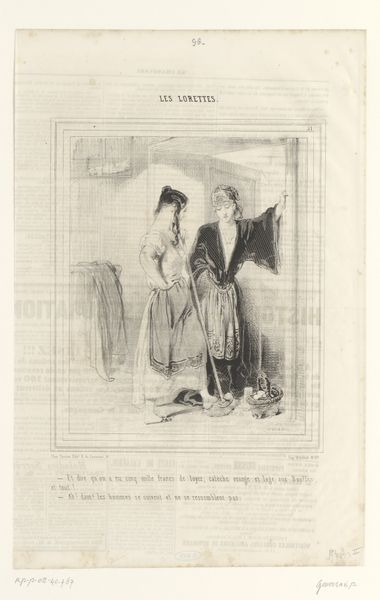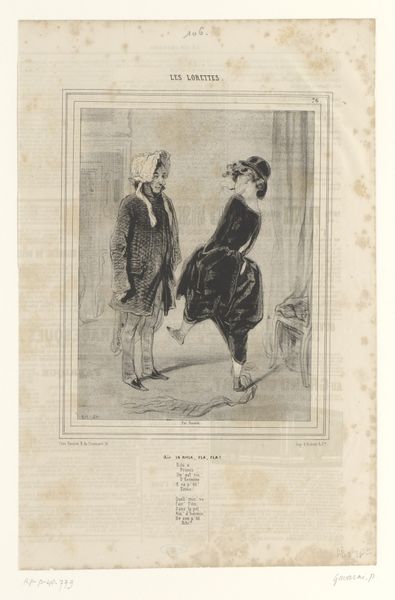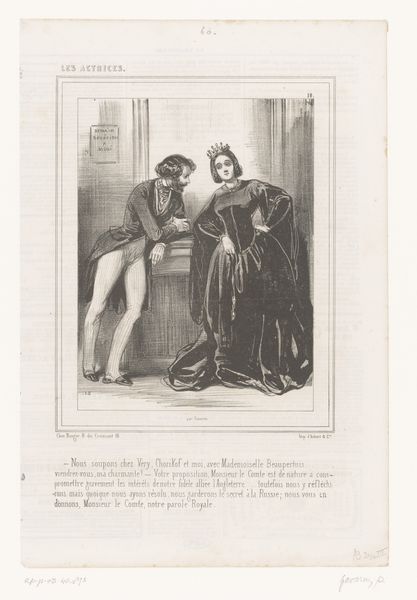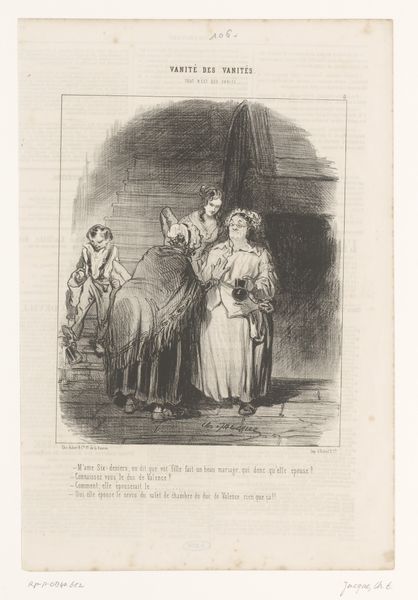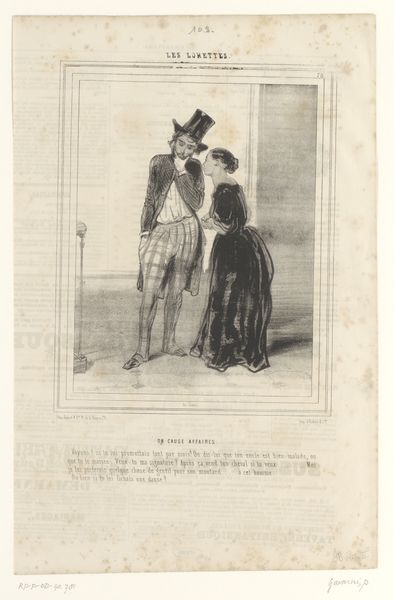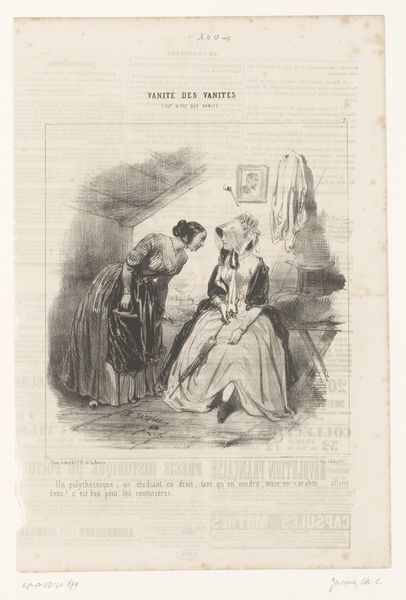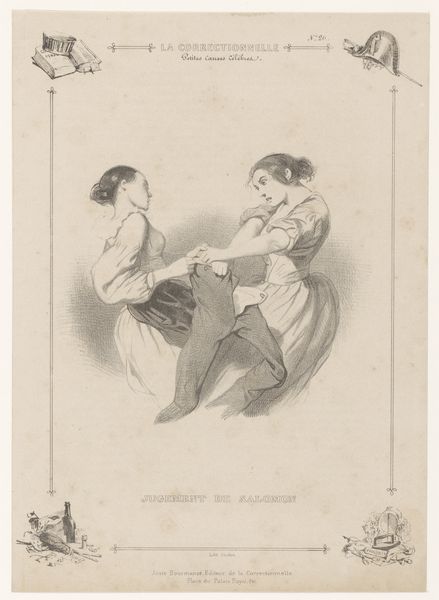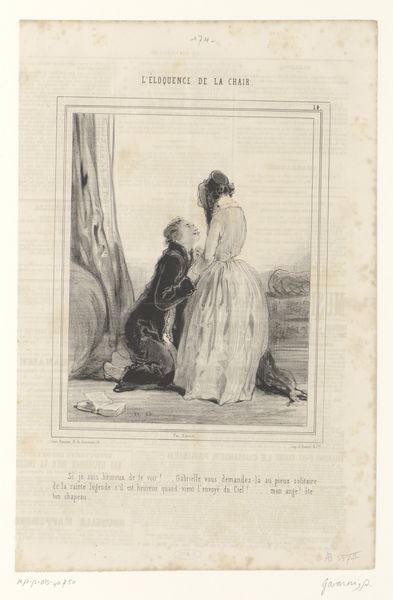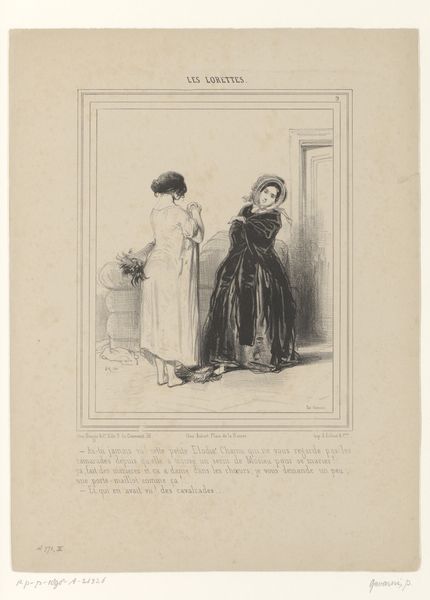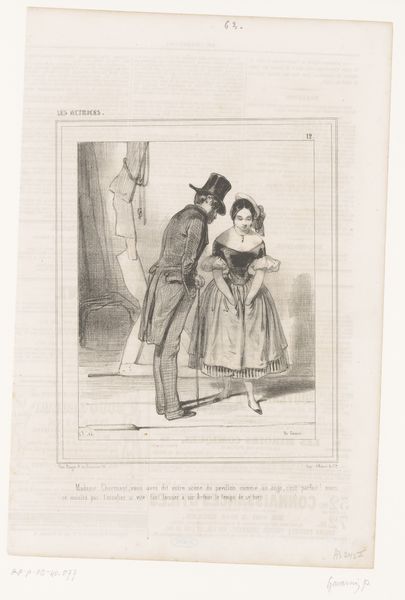
Dimensions: height 362 mm, width 236 mm
Copyright: Rijks Museum: Open Domain
Paul Gavarni made this print, “Graaf ontslaat dienstmeid,” using a technique called lithography. This process involves drawing on a flat stone with a greasy crayon, then treating the stone so that ink adheres only to the drawn areas. Lithography allowed for relatively quick and inexpensive reproduction, making images like this accessible to a wide audience. Gavarni used the lithographic crayon to create a range of tones and textures, from the smooth surfaces of the figures’ clothing to the more detailed rendering of their faces. The print's visual qualities are directly linked to the lithographic process. The subtle gradations of tone, and the slightly grainy texture, all contribute to the image's overall mood and meaning. This wasn't a unique work of art, but part of a larger print culture, reflecting the social and economic realities of 19th-century Paris, particularly the lives of working-class women. Considering the material and making of this print helps us appreciate its role in shaping public perceptions of class and labor.
Comments
No comments
Be the first to comment and join the conversation on the ultimate creative platform.

